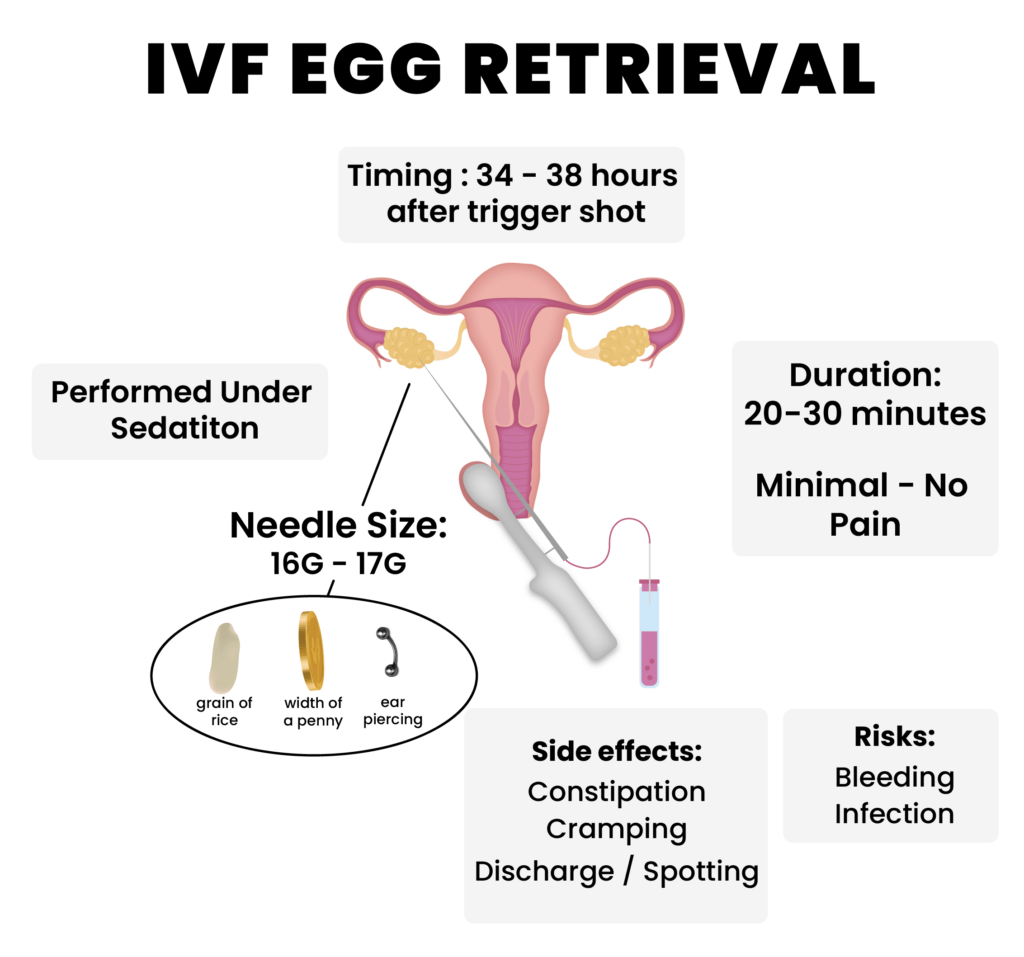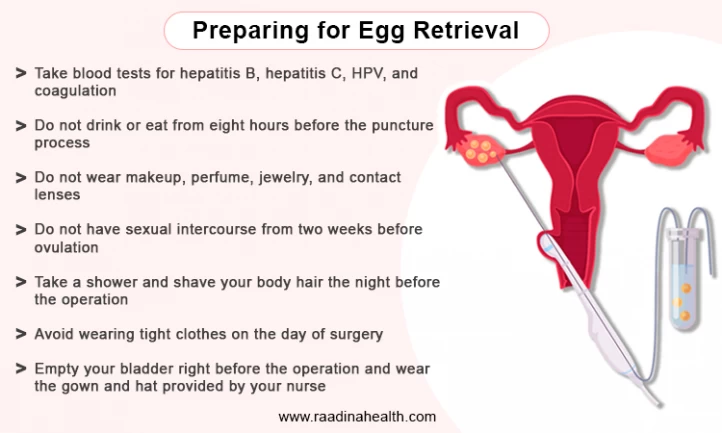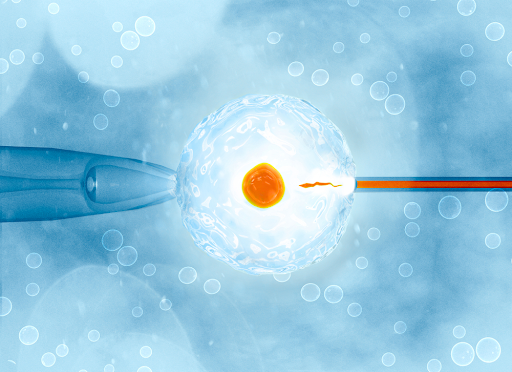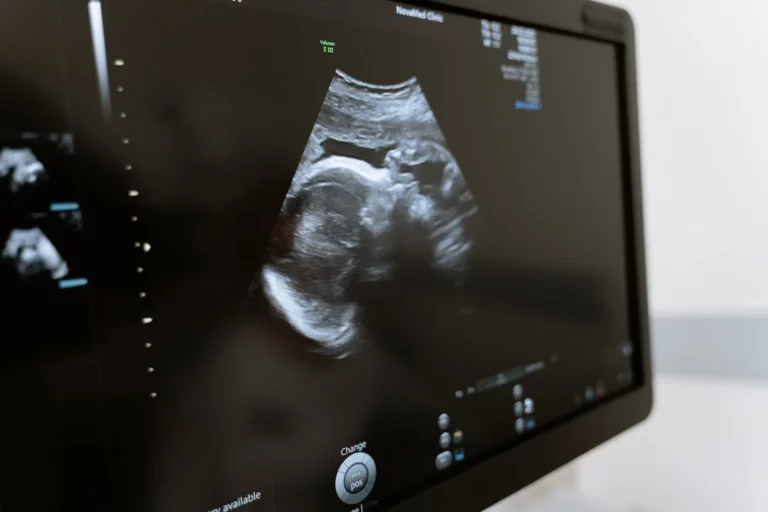IVF Harvesting Eggs
IVF Harvesting Eggs/Egg Retrieval Procedure
Harvesting eggs/egg retrieval is an integral part of the IVF process. It is the harvesting of eggs from a woman’s ovaries in preparation for freezing or fertilization. The procedure is done in a minimally invasive manner which means that it does not leave any scar tissue behind, and it has a short recovery period. The egg retrieval process is usually preceded by the beginning of stimulation or medically preparing a woman’s ovaries for multiple follicle maturation. The medication is usually started on days 2-4 of a woman’s natural menstrual cycle, and it is administered for approximately ten days. In the case of a woman who is not seeing her menstrual cycle or has irregular cycles, the drug can be started at any time. The administration would, however, be preceded by a baseline appointment to measure the starting hormone, follicular and endometrial levels.

How to prepare for IVF harvesting eggs/egg retrieval
The body should be physically prepared for the egg retrieval process and in general, the entire IVF process. Some recommendation on the ways to ensure that the body is at an optimum level includes:
- Eating healthy and well-balanced diets.
- Quitting smoking and recreational drugs entirely.
- Quitting excessive alcohol intake.
- Maintaining a healthy weight through diet and light exercise.
- Avoiding stressful situations and conditions.
- Eliminate and reduce caffeine intake significantly.
- Avoid travel to regions or countries that have endemic infectious diseases like Zika virus which may delay the treatment.
Some ways through which an individual can reduce stress as they prepare for the egg retrieval procedure include:
- Meditation
- Journaling
- Light exercise
- Massages
- Joining a support group
- Yoga and acupuncture
Also, some fear and anxiety about the IVF process which can contribute to the stress stem from ignorance and uncertainty about the treatment and its potential side effects.
Before starting the IVF process, it is recommended for the individual to research as much as possible about any uncertainty that they may face, and also consult with the fertility team or doctor in charge of the process as much as possible, they will also help in clarifying the procedure and detailing the steps of the treatment. The amount of time for the administration of the fertility medication and the actual day of retrieval is governed by the follicular and egg development.
Follicular development is measured at intervals during monitoring appointments, and the endometrial lining, follicle size, and hormone levels are measured using a combination of blood work and ultrasound tests. The egg retrieval is done about 35 hours after the administration of the trigger shot of hCG, which stimulates the final maturation of the eggs and triggers ovulation. The retrieval is timed so that the eggs are removed before they are ovulated, they are aimed at catching the eggs at a point where they are ready for fertilization but are still within their follicles.
Preparing for the procedure
It is crucial to follow the instruction of the fertility team and doctors carefully. It is also likely that some precautions must be observed in preparation for the egg retrieval procedure. Also, it is important to wear comfortable and easy-to-remove clothes on the day of the procedure. The patient should arrive ahead of time and also ensure that they have a companion that will take them home after the procedure, a friend or family member is usually recommended.
It is also advised to fast at least 12 hours before the procedure and to not wear perfumes and fragrances on the day of the procedure. After check-in, the patient changes into a hospital gown and is taken to the operating room. In the room, the patient consults with the team that will carry out the surgical procedure, have blood work, and then sign some consent forms. The patient is then connected to monitors that will monitor their vitals throughout the procedure.

The surgery
The egg retrieval procedure starts with the anesthesiologist administering light intravenous anesthesia to the patient. Once sedated, the surgeon uses ultrasound with a probe to pinpoint the location of the ovarian follicles. Then a hollow needle with a catheter attached to it which has mild suction is guided through the vaginal wall to drain the fluid from the follicles. The egg is drained as well because they are contained within the follicular fluid. They are drained into labeled test tubes.
After collection, the test tubes are transported to the IVF labs where the eggs are located, isolated from the follicular fluid, and transferred to another media where they will continue to develop for some hours before freezing or fertilization. The entire procedure from locating to retrieving the eggs does not take much time, less than 30 minutes. Once the retrieval is complete, the patient is brought out of sedation and transferred to a recovery room for monitoring. It takes around 45 minutes for the patient to be fully recovered after which they are ready to go home. The patient is notified of how many eggs were retrieved, and any other additional questions or requests are handled before they are discharged.
Recovery
The patient should get lots of rest the day before and the day of the procedure. The doctor tells them to return the following day barring any complications. There is mild pain, bloating, mild soreness around the vaginal area, slight spotting, and mild abdominal cramping after the egg retrieval procedure. These may last for some days after the procedure and some pain relievers like ibuprofen are recommended for the patient.
A follow-up appointment is usually not required, but in the cases where there is severe pain, throwing up, or excessive bloating, the patient is advised to contact their fertility team and doctor.
Ovarian hyperstimulation syndrome (OHSS) is a condition that women taking fertility medication are at risk of developing. The conditions cause the ovaries to swell up and become painful. Some of the symptoms include nausea, vomiting, diarrhea, and tenderness around the ovaries. OHSS usually happens within a week of the trigger shot and can be relieved by placing the patient on a high-protein diet and acupuncture. The symptoms usually subside after a week, but if they are severe they might require further medical attention.
The information provided in this blog is for educational purposes only and should not be considered as medical advice. It is not intended to replace professional medical consultation, diagnosis, or treatment. Always consult with a qualified healthcare provider before making any decisions regarding your health. Read more







